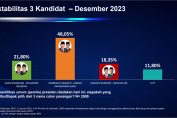by Hamdan Hamedan
The “True Cost of Food: School Meals Case Study” report underscores the significant health and economic advantages of the free lunch program in American schools. This initiative benefits 30 million students nationwide, costing around $18.7 billion annually but generating an impressive $40 billion in health and economic benefits, leading to a net gain of approximately $21 billion.
The report also suggests that enhancing the program with a focus on local, nutritious, and sustainable food could boost benefits by an additional $10 billion.
Currently, eight states in the U.S. provide free lunch to all students, not solely those from low-income backgrounds, with other states beginning to follow suit.
The rationale is clear: extensive research confirms that school meals improve students’ academic performance, reduce malnutrition rates, and bolster both family and national economies.
Despite America’s wealth, nutritious meals remain out of reach for many families. The annual cost for a child’s breakfast and lunch can soar to around Rp. 23 million, posing a substantial burden for many.
Minnesota, for example, has invested in free school lunches to ensure students can “focus on learning” without the worry of hunger, according to Stacy Koppen, Nutrition Director at St. Paul Public Schools.
Emily Honer, from the Minnesota Department of Education, emphasizes that well-nourished students perform better academically, addressing the concern that some may not know where their next meal will come from.
In Albuquerque, New Mexico, the introduction of a free lunch program led to higher student attendance. Lorraine Martinez, a school secretary, noted improvements in children who previously suffered from hunger-related health issues, stating they now receive the necessary nutrition.
Surveys show that the program’s success with students stems from three factors: delicious food, no cost, and menu transparency.
An impressive 85% of students show interest in free meals, and an Urban Institute survey revealed strong parental support, with 76% in favor. This widespread approval underscores the program’s significance and potential for broader implementation.












